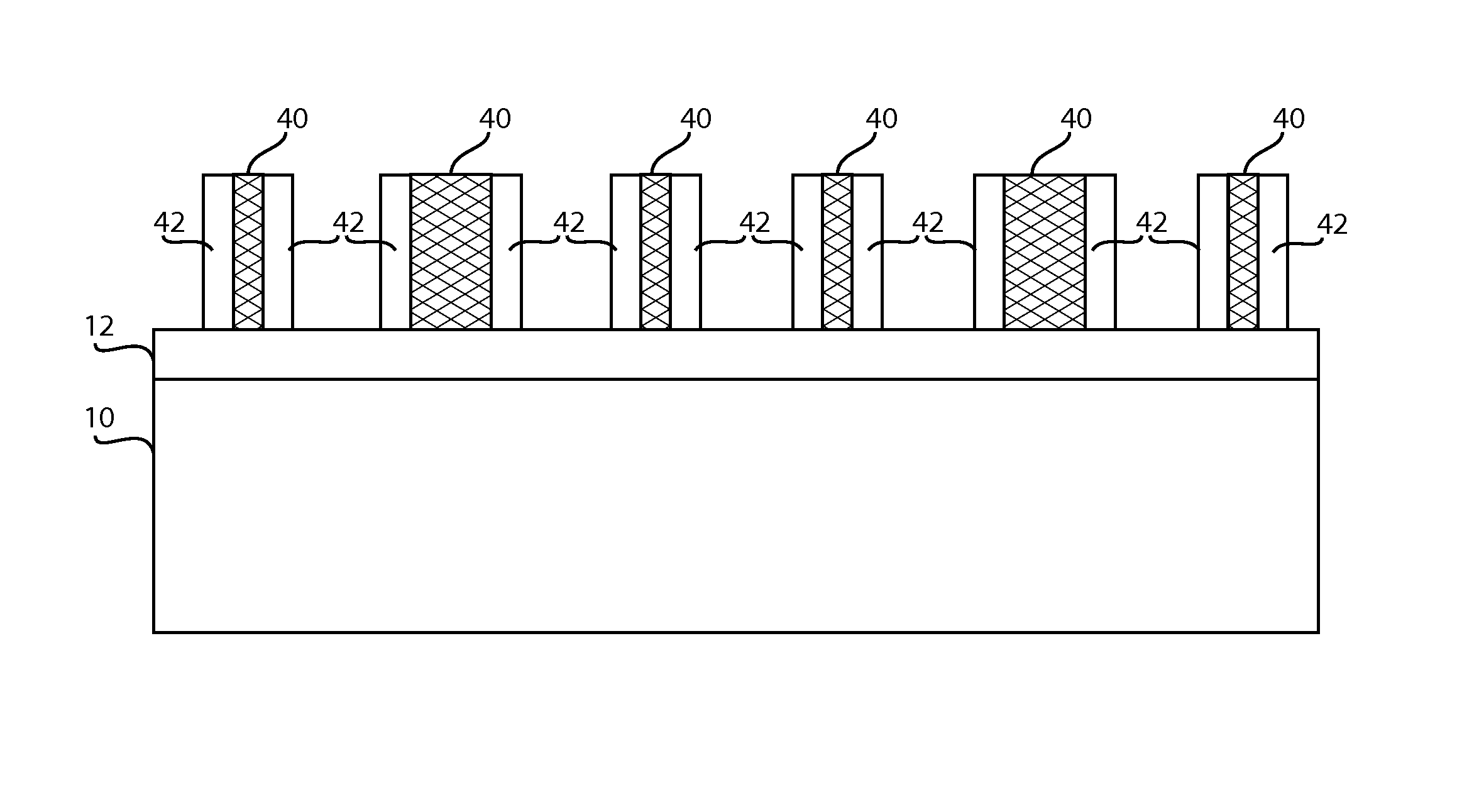Dense finFET SRAM
a technology of static random access memory and finfet logic, which is applied in the direction of transistors, electrical devices, semiconductor devices, etc., can solve the problems of increasing the size of sram cells, and affecting the stability of the finfet logi
- Summary
- Abstract
- Description
- Claims
- Application Information
AI Technical Summary
Problems solved by technology
Method used
Image
Examples
Embodiment Construction
[0027]In accordance with the present principles, a method and device are provided for a dense finFET (fin field effect transistor) SRAM (static random-access memory). Using angled ion implantation into select portions of mandrels, the oxidation rate may be altered. For example, the implanted species may include fluorine to enhance the oxidation rate of exposed portions, or nitrogen to reduce the oxidation rate of exposed portions. Other ion types are also contemplated. Next, oxidation is performed to form thick oxide and thin oxide, according to the implanted ion type. A top layer of the oxidized portions are removed to the underlying mandrel layers, and then the mandrels are removed. Spacers are formed around the remaining oxidized portions and the remaining oxidized portions are removed. The spacers are employed as a mask to form fins. Advantageously, the present principles provide fins with a dense fin pitch which enables both merged fins and unmerged fins without the use of dumm...
PUM
 Login to View More
Login to View More Abstract
Description
Claims
Application Information
 Login to View More
Login to View More - R&D
- Intellectual Property
- Life Sciences
- Materials
- Tech Scout
- Unparalleled Data Quality
- Higher Quality Content
- 60% Fewer Hallucinations
Browse by: Latest US Patents, China's latest patents, Technical Efficacy Thesaurus, Application Domain, Technology Topic, Popular Technical Reports.
© 2025 PatSnap. All rights reserved.Legal|Privacy policy|Modern Slavery Act Transparency Statement|Sitemap|About US| Contact US: help@patsnap.com



